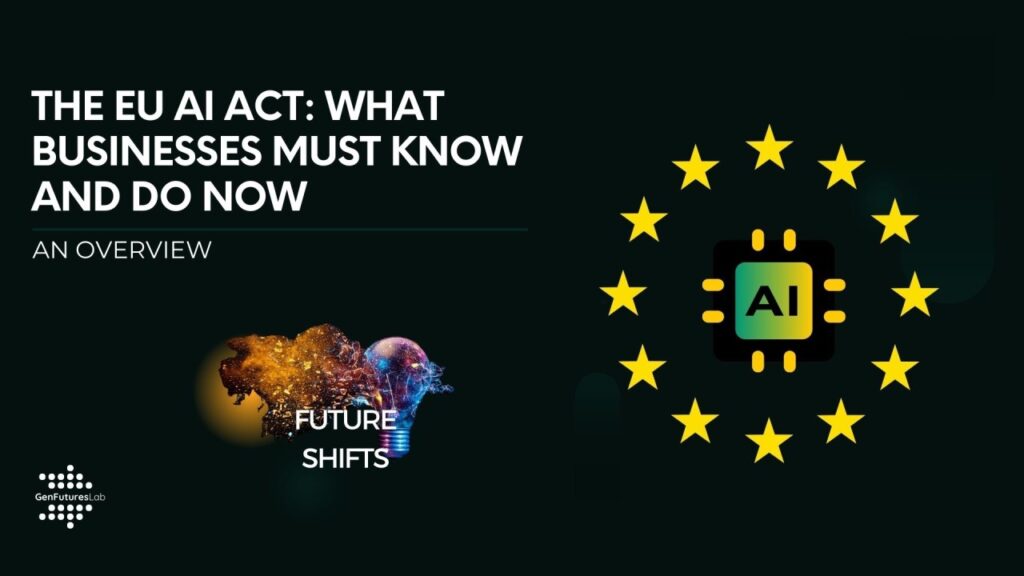Overview: The EU AI Act in Focus
The EU AI Act is a comprehensive regulation designed to ensure that AI systems used in the European market are safe, transparent, and respect fundamental rights. It introduces a risk-based approach that categorises AI applications into three main levels: unacceptable, high, and limited risk—with an extra focus on general-purpose AI models. This framework not only aims to build public trust in AI but also forces providers and deployers to adopt robust risk management and oversight measures.
Risk-Based Classification: Diving into the Details
Under the Act, the risk each AI system poses determines its regulatory obligations:
🔴 Unacceptable Risk: AI systems that manipulate behaviour, enable social scoring, or use real-time biometric identification in public spaces are banned, except for narrowly defined law enforcement exceptions.
🟠 High Risk: Applications that affect safety, health, or fundamental rights—such as AI used in healthcare diagnostics, credit scoring, or recruitment—must comply with stringent requirements. These include risk assessments, comprehensive technical documentation, quality data management, and human oversight. For example, a high-risk AI system in recruitment must undergo bias testing, ensure transparency, and allow human oversight to review and override automated decisions.
🟢 Limited Risk: AI systems in this category, such as chatbots or AI-generated content tools, must meet transparency obligations—ensuring users are informed when they interact with AI-generated outputs.
Additionally, General-Purpose AI (GPAI) models, including foundation models like ChatGPT, are now subject to stricter transparency and risk management requirements. High-impact GPAI models must undergo systemic risk evaluations before market deployment.

Real-World Example: AI in Consumer Products
Consider an AI-powered virtual assistant embedded in a smart home device that adapts to user behaviour and automates household tasks. If the AI system controls essential functions, such as home security or fire detection, it may be classified as high-risk. To comply with the EU AI Act, the manufacturer must:
- Implement stringent cybersecurity and fail-safe mechanisms to prevent malfunctions.
- Provide clear user information about how the AI system makes decisions and processes data.
- Allow users to override automated decisions and opt out of AI-driven recommendations.
- Conduct continuous monitoring and updates to address potential risks.
By enforcing these measures, the EU AI Act ensures that consumer AI products remain safe, reliable, and transparent while offering innovative functionality.
Global Implications: Extraterritorial Reach
A crucial aspect of the EU AI Act is its extraterritorial scope. Companies outside the EU that sell AI-powered products or use AI-generated outputs within the EU market must comply with the regulation. This means that businesses worldwide—whether they’re tech startups or global corporations—must align their AI practices with EU standards to maintain market access, build consumer trust, and ensure long-term scalability.
Beyond regulatory compliance, adhering to the EU AI Act provides a strategic advantage: businesses that prioritise responsible AI development can differentiate themselves in an increasingly AI-driven world. Transparency, safety, and fairness are not just legal requirements—they are key to fostering customer confidence and industry leadership.
What About the UK’s Approach to AI Regulation?
As of February 2025, the UK’s approach to AI regulation is undergoing significant developments. Initially, the government adopted a pro-innovation, principles-based framework, empowering existing sectoral regulators to oversee AI applications within their domains, as outlined in the white paper “A pro-innovation approach to AI regulation”, originally published in 2023 under the Sunak conservative government. (More here)
This strategy emphasised flexibility and sector-specific oversight to balance innovation with risk mitigation. However, recent political shifts, including the election of President Trump in the United States, have influenced the UK’s regulatory trajectory. In February 2025, the UK government postponed its anticipated AI bill, originally expected before Christmas, to align more closely with the U.S. administration’s technology policies. (Link to article)
This delay reflects the UK’s intent to harmonise its AI regulatory framework with international partners, particularly the U.S., while continuing to foster innovation and address emerging challenges in AI governance.
How GenFutures Lab Can Help
At GenFutures Lab, we specialise in turning regulatory challenges into strategic advantage. Our tailored services include:
✅ AI Compliance Audits:Assessing your AI systems against the latest EU AI Act requirements and identifying compliance gaps.
✅ Risk Management Strategies:Implementing governance structures, risk mitigation processes, and data quality frameworks to meet high-risk obligations.
✅ Staff Training:Designing AI literacy programmes to ensure your team understands both the technology and regulatory landscape.
✅ Ongoing Regulatory Support: Keeping you updated on new compliance deadlines, enforcement actions, and best practices as the Act evolves.
Are you ready for the new AI era? Let’s make compliance a strategic advantage.
📩 Book a free 20-minute discovery call to future-proof your AI systems HERE.
Final Thoughts
The EU AI Act isn’t just another regulation—it’s been a defining moment in AI governance. Businesses that act now will not only avoid legal risks but also gain a competitive advantage by demonstrating trustworthiness and compliance.


